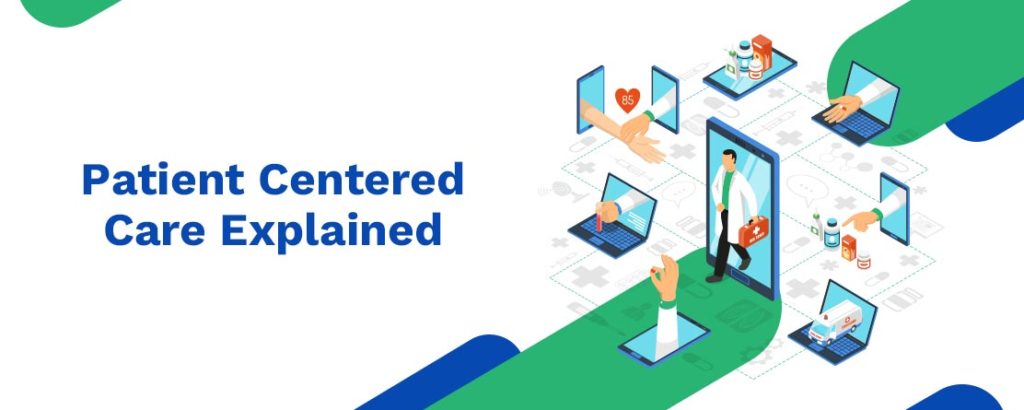The Ultimate Guide To Elevating Patient Experience

In the ever-evolving landscape of healthcare, patient experience stands as the foundation of delivering high quality of care. As the heartbeat of any medical practice, elevating the patient experience goes beyond providing exceptional clinical services; it includes every aspect of a patient’s journey from the moment they step through the door, all the way to getting their consultation and treatment done.
Let’s dive into the essential elements that weave together to ensure patient-centeredness, and make sure that patients not only receive top-notch medical care but also feel valued, empowered, and truly cared for throughout their healthcare journey.
Defining Patient Experience
Carrying so much value and being able to help healthcare practices succeed – so, what is patient experience?
Patient experience is a combination of all the aspects of a patient’s interactions and perceptions during their entire healthcare journey. It goes beyond clinical treatments, embracing emotions, communication, and overall quality of care.
A positive patient experience is rooted in empathy, clear communication, and a commitment to exceptional quality of care that develops trust and comfort.
Understanding and enhancing patient experience empowers healthcare providers to develop and maintain a patient-centric environment, which eventually enables providers to exceed patient expectations as a result.
Patient Experience vs Patient Satisfaction
It is incorrect but very common for people to use patient experience and patient satisfaction interchangeably, as if they mean the same – however, they actually represent different concepts that impact the way patients perceive and engage with their healthcare providers.
Understanding the difference between patient experience and patient satisfaction is crucial for healthcare organizations that are striving to deliver exceptional care.
Here’s how they differ:
Patient experience includes the entirety of the patient journey, including clinical and emotional aspects, from scheduling appointments to post-treatment follow-ups. Factors like staff responsiveness, clear communication, empathy from healthcare providers, and efficient processes – all contribute to a positive patient experience, leading to developed trust and stronger patient-provider connection.
On the other hand, patient satisfaction measures how content patients are with the care that they receive, which is usually assessed through post-visit surveys and feedback forms.
However, high satisfaction doesn’t always mean a positive patient experience; quality of care and open communication are essential for genuine patient satisfaction.
Key Elements To Elevate Patient Experience
Enhancing patient experience is the bedrock of delivering exceptional quality of care, encompassing every interaction that patients have with their healthcare providers. By focusing on key elements that prioritize communication, empathy, personalization, continuity, and engagement, healthcare organizations can create an environment that fosters trust, compassion, and patient empowerment.
Listed below are the key elements that can help providers boost patient experience:
Communication: Building Trust Through Effective Engagement
Effective communication forms a strong base for a positive and improved patient experience. Healthcare providers who follow a patient-centric approach and actively listen to their patients’ concerns, explain medical information in understandable terms, and involve patients in their healthcare decisions – maintain patient-centeredness and building a foundation of trust.
Clear and empathetic communication assures patients that they are genuinely heard, understood, and valued – developing a strong patient-provider relationship that enhances overall patient satisfaction and treatment outcomes.
Empathy: Cultivating Compassionate Care
Empathy lies at the heart of compassionate care, acknowledging patients’ emotions, fears, and vulnerabilities. Healthcare providers who demonstrate empathy through their words, body language, and actions create a supportive and comforting environment, improving the quality of care.
Recognizing the emotional aspect of patients’ healthcare journeys fosters a sense of security, reduces anxiety, and strengthens patient confidence in their healthcare team.
Personalization: Tailoring Care To Individual Needs
Every patient is unique, and delivering personalized care is an essential part of elevating the patient experience. By considering individual preferences, values, and circumstances, healthcare providers can customize treatment plans that align with individual patients’ needs and lifestyle.
Personalized care not only enhances the quality of care and effectiveness of the treatment, but also reinforces patients’ trust in their healthcare team, leading to better compliance and improved health outcomes.
Continuity: Seamless Transitions Across The Care Journey
Seamless continuity of care is critical in providing a positive patient experience. Ensuring smooth transitions between different stages of care, specialties, or healthcare settings builds a sense of coherence and confidence in the healthcare process.
Effective care coordination, timely follow-ups, and consistent communication among healthcare providers contribute to a cohesive and patient-centric healthcare journey.
Engagement: Empowering Patients As Active Partners
Empowering patients as active partners in their healthcare decisions is vital to elevate patient experience. By involving patients in their treatment planning, goal-setting, and self-management, healthcare providers enable patients to take ownership of their health.
Engaged patients are more likely to adhere to treatment plans, make informed decisions, and participate actively in their recovery, leading to improved overall health and well-being. Also, a positive patient experience in healthcare can lead to increased patient loyalty and word-of-mouth referrals, benefiting the reputation of the healthcare facility.
Measuring Patient Experience With CAHPS Surveys
In pursuit of elevating patient experience and delivering patient-centric care, healthcare organizations rely on valuable tools like CAHPS (Consumer Assessment of Healthcare Providers and Systems) surveys. These standardized patient experience surveys, developed by the Agency for Healthcare Research and Quality (AHRQ), play a pivotal role in assessing and quantifying patients’ perspectives on their healthcare encounters.
By providing structured and reliable data, CAHPS surveys enable healthcare providers to gain meaningful insights into patient experiences, identify areas for improvement, and benchmark their performance against national as well as industry standards.
Conclusion
Enhancing patient experience requires prioritizing communication, empathy, personalization, continuity, and engagement. To streamline these efforts, Zebdoc empowers healthcare providers with intuitive tools for patient engagement, seamless workflows, and improved care coordination.
Embrace the future of patient-centric care by integrating zebdoc into your practice and deliver exceptional patient experiences that leave a lasting positive impact on your patients.


